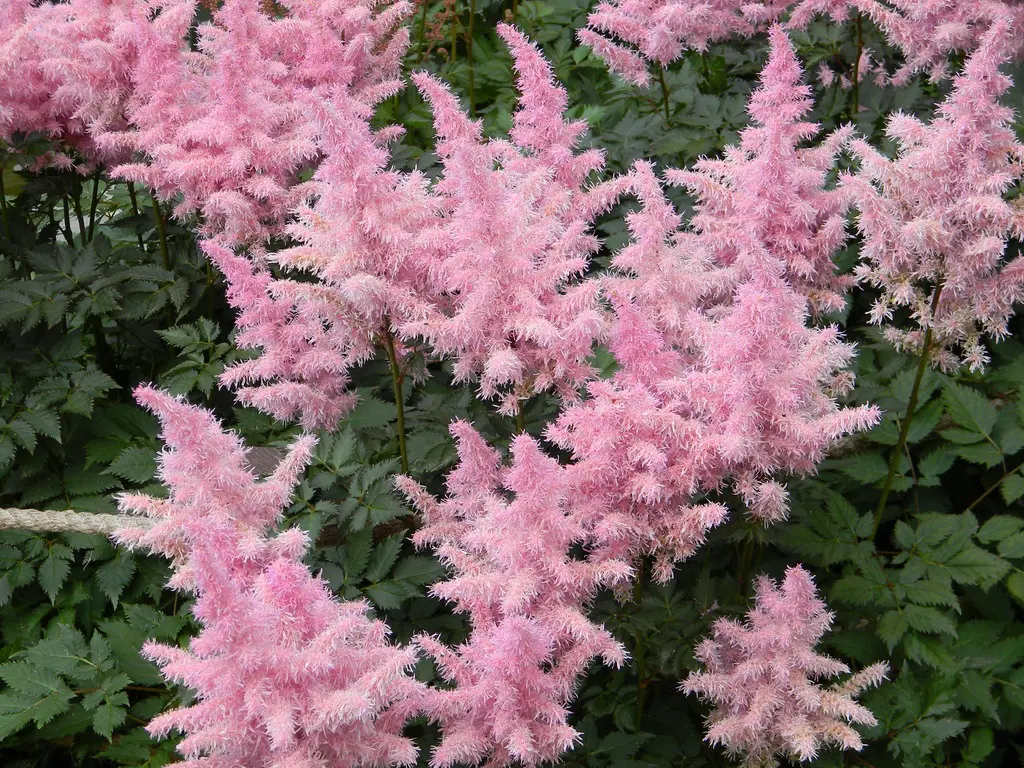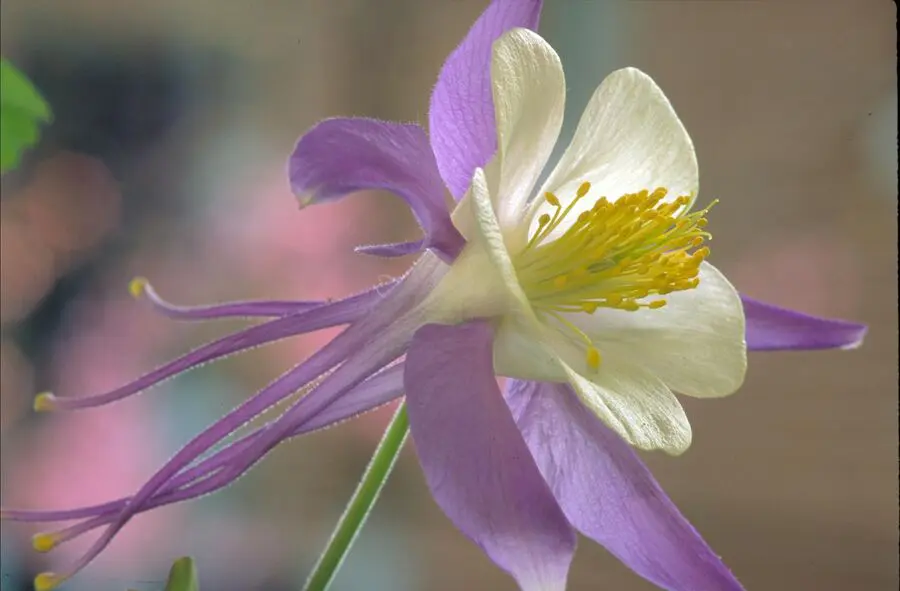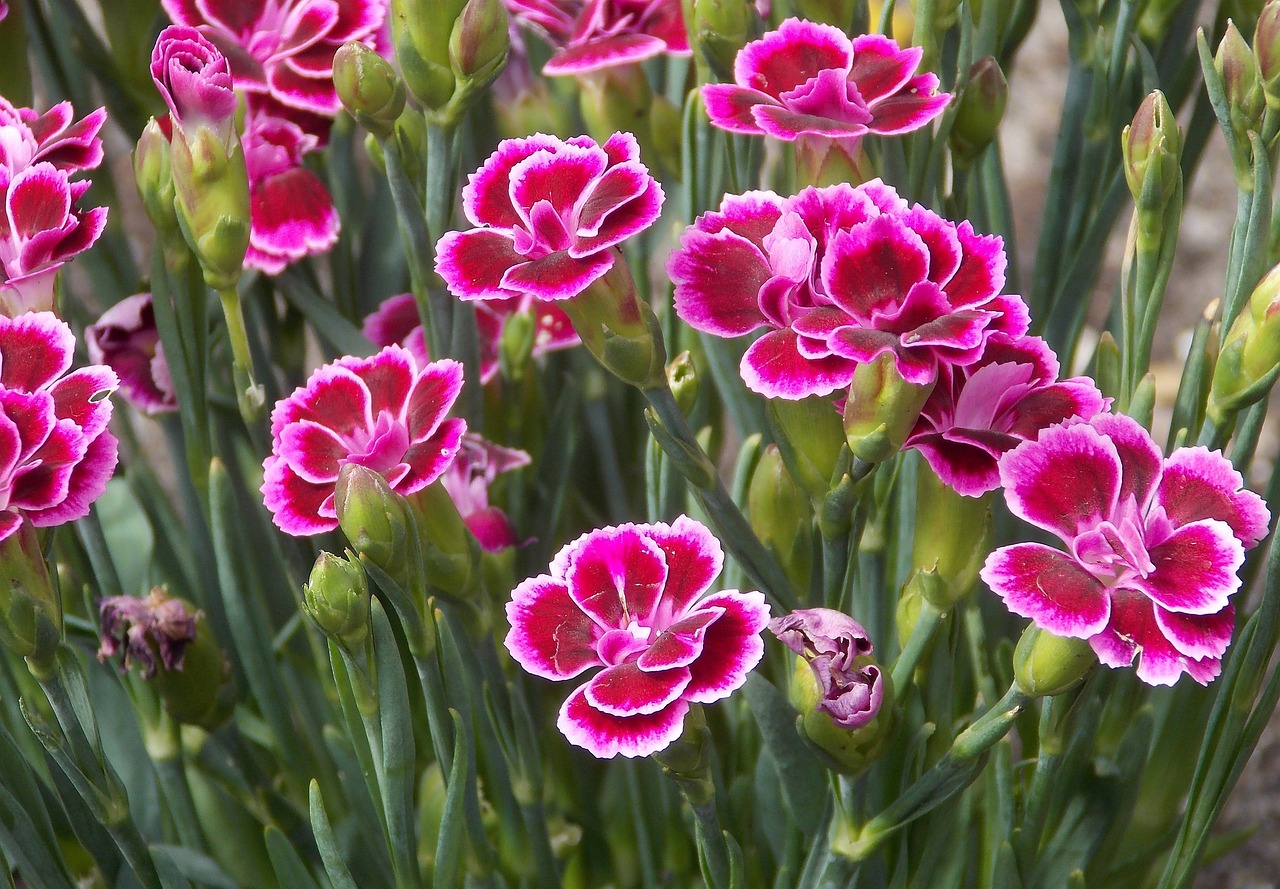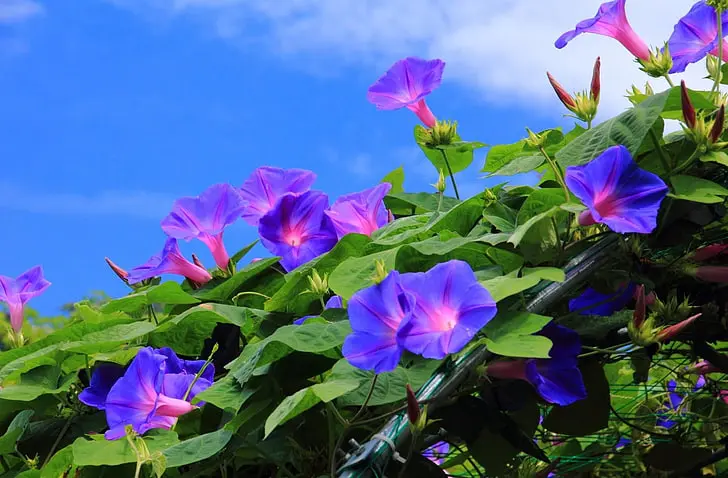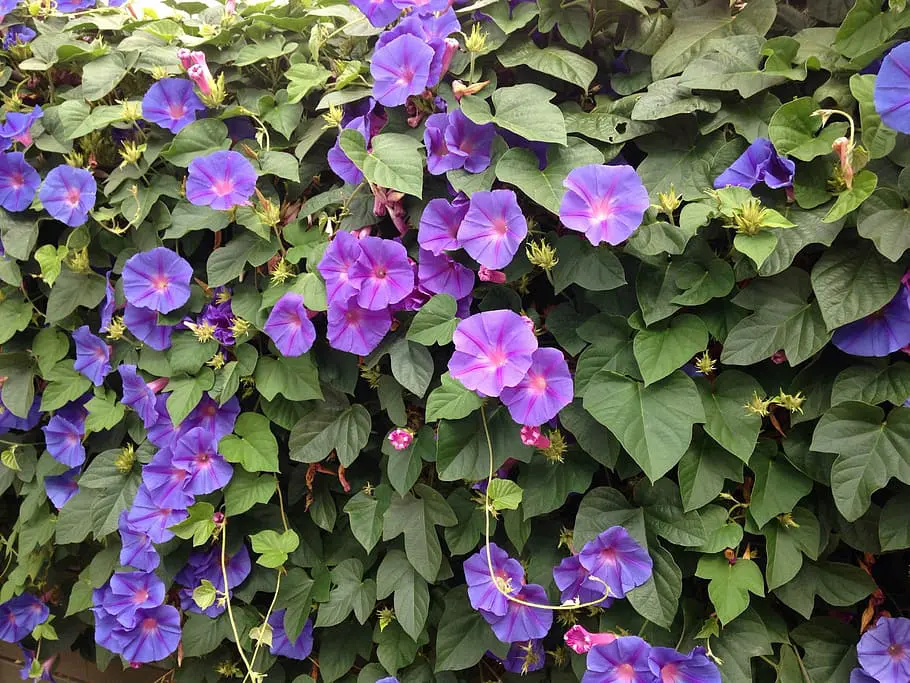This post contains affiliate links. If you buy something from one of our links we may earn a commission. Thanks
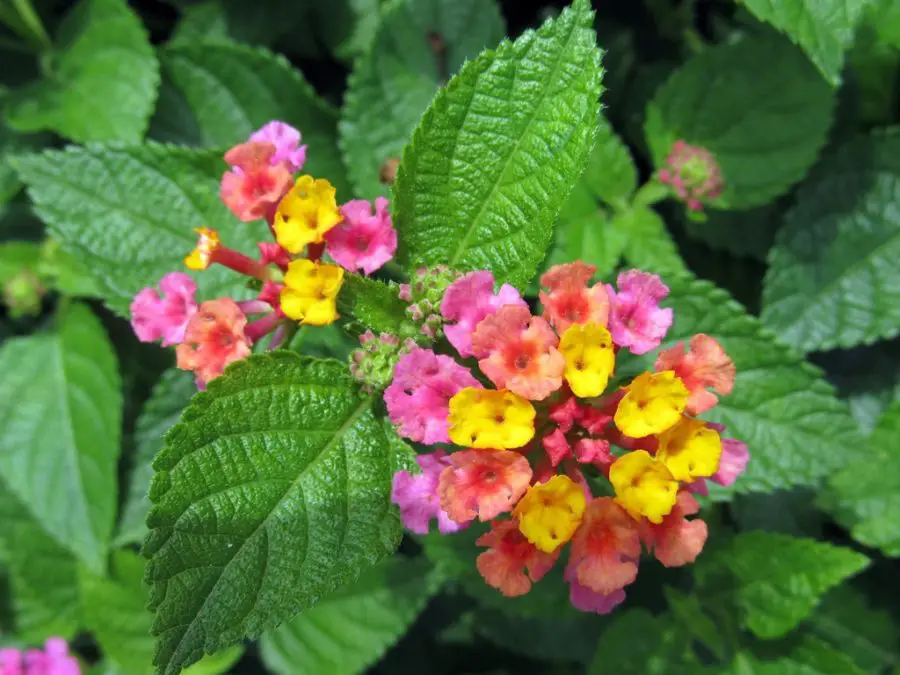
Discover the joy of growing vibrant Lantana in pots! Our guide on how to care for Lantana in pots shares easy tips for a flourishing, butterfly-attracting display.
To care for Lantana in pots, use well-draining soil and ensure the container has drainage holes. Place the pot in a location with full sun to partial shade. Water when the top layer of soil feels dry, and feed with a balanced, slow-release fertilizer every 6-8 weeks. Trim back spent blooms to encourage more flowering.
Welcome to the colorful world of Lantana! If you’ve been wondering how to care for Lantana in pots, you’re in the right place.
These vibrant, butterfly-attracting plants are a joy to grow and can turn any patio or balcony into a tropical paradise.
So, let’s dive in and explore the simple steps to nurture these beauties in your own pots, shall we?
How To Care For Lantana In Pots
Are you ready to add a splash of color to your outdoor space? Well, you’re in luck!
This comprehensive guide on how to care for Lantana in pots is here to help you do just that.
We’ll cover everything from understanding the vibrant Lantana plant to choosing the right variety, planting, and essential care tips.
Plus, we’ll delve into common problems and their solutions, and even how to keep your Lantana thriving through the winter.
So, let’s embark on this exciting journey of turning your pots into a riot of color with Lantana!
Brief Overview of Lantana and Its Popularity as a Potted Plant
Lantana is a charming plant that has captured the hearts of many garden enthusiasts.
Its vibrant flowers bloom for months, adding a splash of color to any space.
Its ability to thrive in pots has made it a popular choice for those looking to add a tropical touch to their patios, balconies, or indoor spaces.
What colors are lantana flowers?
Lantana flowers come in a wide range of vibrant colors. These include yellow flowers, red, orange, pink, white, and purple flowers.
One of the unique features of Lantana flowers is that they often exhibit multiple colors within the same cluster, creating a beautiful and striking multicolored effect.
For example, a single flower cluster might start out as yellow in the center with pink or red on the outer edges.
As the flowers mature, the colors can change, often resulting in a two- or three-tone effect.
This color-changing characteristic is one of the reasons why Lantana is so popular and visually appealing.
Benefits of Growing Lantana in Pots
There’s a lot to love about growing Lantana in pots. Not only does it bring life and color to your space, but it’s also a hardy plant that can withstand full sun and periods of neglect.
So, if you occasionally forget to water your plants, Lantana is a forgiving choice.
Attracting Butterflies and Hummingbirds
One of the joys of having Lantana in your garden is its ability to attract beautiful butterflies and hummingbirds.
These creatures are drawn to the bright, nectar-rich flowers of Lantana, providing you with a delightful display of nature right in your own garden.
Aesthetics and Versatility of Lantana
Lantana’s appeal isn’t just in its vibrant flowers. Its lush green foliage adds a beautiful contrast, making it a feast for the eyes. What’s more, Lantana is a versatile plant.
With its different forms, from bushy to trailing to dwarf, it can fit into various types of pots and match different garden styles.
Whether you’re looking for a stand-alone plant for your pot or a trailing beauty for your hanging basket, Lantana has got you covered.
What Is Lantana?
Ever looked at a Lantana and wondered, ‘What exactly is this vibrant beauty?’ Well, let’s unravel the mystery together.
Lantana is more than just a pretty face in the garden. It has a rich history, a unique appearance, and a fascinating life story that’s worth exploring.
So, let’s dive in and get to know this colorful character a little better, shall we?
Understanding Lantana
Let’s start with the basics. Lantana is a genus of about 150 species of perennial flowering plants in the verbena family, Verbenaceae.
They’re native to tropical regions of the Americas and Africa but have been introduced in other parts of the world as ornamental plants.
Known for their vibrant, clustered flowers and aromatic foliage, Lantanas are a favorite among gardeners and nature lovers alike.
A. Lantana camara (common lantana) is a species of flowering plant within the verbena family (Verbenaceae), native to the American tropics.[5][6] It is a very adaptable species, which can inhabit a wide variety of ecosystems. https://en.wikipedia.org/wiki/Lantana_camara
Lantana montevidensis, a species of lantana native to South America, goes by a variety of common names.
You might hear it referred to as trailing lantana, weeping lantana, creeping lantana, small lantana, purple lantana, or even trailing shrub verbena.
Description of Lantana
Lantana plants are quite distinctive. They have a unique, somewhat shrubby growth habit, often reaching between 1 to 4 feet in height, depending on the variety.
The leaves are oval-shaped, have a rough texture, and emit a distinct aroma when crushed.
But the real show-stoppers are the Lantana flowers. They bloom in clusters, with each tiny tubular flower contributing to a vibrant bouquet that can include shades of red, orange, yellow, pink, white, and even blue.
Lantana Origin
Lantana hails from the tropical regions of the Americas and Africa. It’s a plant that loves warmth and sun, which is why it thrives in USDA zones 9 through 11.
However, its hardiness and adaptability have allowed it to find a home in gardens around the world, even in cooler climates where it’s grown as an annual.
Appearance
The appearance of Lantana is a feast for the eyes. The vibrant flowers, which change color as they mature, create a multi-hued display that’s hard to miss.
The flowers are set against a backdrop of dark green leaves, creating a striking contrast. T
he plant’s growth habit, whether mounding or trailing, adds to its visual appeal, making it a versatile choice for various garden styles and containers.
Lantana varieties
Ready to add some Lantana magic to your garden? Well, the first step is choosing the right variety.
With so many beautiful Lantana varieties out there, each with its own charm, making a choice can be a bit overwhelming.
But don’t worry, we’re here to help! In this section, we’ll explore the different Lantana varieties and what makes each one special.
So, whether you’re looking for a mounding variety for your pot or a trailing one for your hanging basket, we’ve got you covered!
Choosing the Right Lantana Varieties for Your Pot
When it comes to choosing the right Lantana variety for your pot, it’s like being a kid in a candy store with so many delightful options!
From the compact ‘Patriot Rainbow’ with its multicolored flowers to the trailing ‘Pinkie’ with its lovely pink and cream blooms, there’s a Lantana for every taste and every pot.
The key is to consider the size of your pot, the location, and the overall look you’re going for.
Factors to Consider When Choosing a Lantana Variety for Potting
Choosing the right Lantana variety isn’t just about picking the prettiest flower (although that’s certainly part of the fun!).
You also need to consider practical factors. How big is your pot? Larger varieties might look stunning, but they also need more space to grow.
Where will the pot be located? Some Lantanas thrive in full sun, while others can handle a bit of shade.
And of course, think about the color and growth habit that will best complement your space.
Mounding Lantana vs Trailing Lantana
The growth habit of Lantana can greatly influence the look of your pot. Mounding Lantanas, like ‘New Gold’, grow in a rounded shape and can make a great centerpiece for your pot.
On the other hand, trailing Lantanas, like ‘Purple Trailing’, grow downwards and can spill beautifully over the sides of your pot, making them perfect for hanging baskets or as a spiller in a mixed pot.
Trailing Lantana in Pots
Trailing Lantana in pots can create a stunning visual effect. Imagine a cascade of vibrant flowers spilling over the edge of your pot, creating a waterfall of color.
Trailing varieties like ‘Luscious Grape’ or ‘Spreading Sunset’ are perfect for this. They can be grown in hanging baskets, window boxes, or even in pots placed on a high shelf or wall.
Just remember to give them plenty of sunlight and regular watering, and they’ll reward you with a spectacular display.
Planting Lantana in Pots
Got your Lantana variety picked out? Great! Now, it’s time to roll up your sleeves and get planting.
If you’re wondering how to go about planting Lantana in pots, you’re in the right place.
In this section, we’ll walk you through the process step by step. From choosing the right soil types to deciding what to plant with your Lantana, we’ve got all the details covered.
So, let’s get started on this exciting gardening adventure!
Step-by-Step Guide on How to Plant Lantana in Pots
• Planting Lantana in pots is a straightforward process.
• Start by choosing a pot with good drainage.
• Next, fill the pot with a well-draining, slightly acidic potting mix.
• Place your Lantana plant in the pot, making sure the top of the root ball is level with the surface of the soil.
• Fill in around the plant with more soil, pressing it down lightly.
• Water thoroughly and place your pot in a sunny location.
• And voila! You’ve planted your Lantana.
Importance of Well-Drained Soil and Slightly Acidic Conditions
Lantana plants love well-draining soil and slightly acidic conditions.
Well-draining soil ensures that your Lantana roots don’t sit in water, which can lead to root rot.
Slightly acidic soil, on the other hand, helps Lantana absorb nutrients more effectively, leading to healthier, more vibrant plants.
Using Coco Coir and Perlite
Coco coir and perlite can be great additions to your potting mix when planting Lantana.
Coco coir helps retain moisture in the soil, reducing the need for frequent watering.
Perlite, on the other hand, improves drainage and prevents soil compaction, ensuring that your Lantana roots have plenty of room to grow.
What to Plant with Lantana in a Container
When it comes to companion plants for Lantana, consider plants that have similar care needs.
Sun-loving plants like Salvia, Pentas, and Angelonia can make great companions for Lantana.
Not only will they thrive under the same conditions, but they’ll also create a stunning display of color in your pot.
Just remember to give each plant enough space to grow without crowding the others.
Using Lantana In Spiller, Thriller, and Filler Arrangements
What is a Spiller, Thriller, Filler Arrangement?
A Spiller, Thriller, and Filler arrangement is a popular design technique used in container gardening to create visually appealing and balanced plant compositions.
Here’s what each term means:
Spiller: These are trailing plants that spill over the edge of the container. They add a sense of movement and dynamism to the arrangement.
Examples include trailing varieties of Lantana, Ivy, or Creeping Jenny.
Thriller: This is the star of the show, the plant that catches your eye first due to its height, color, or unique shape. It’s usually placed in the center of the pot if the pot will be viewed from all sides, or towards the back if the pot will be viewed from one side.
Examples include tall, upright plants like Cannas, Ornamental Grasses, or a bushy Lantana.
Filler: These plants fill in the space between the Thriller and Spiller, adding body and fullness to the arrangement.
They usually have a mounding habit and can add texture and color to complement the other plants.
Examples include Petunias, Begonias, or dwarf varieties of Lantana.
By using this Spiller, Thriller, Filler technique, you can create a container garden that’s balanced, varied, and visually interesting from every angle.
Lantana is a versatile plant that can play different roles in your container garden. In the popular Spiller, Thriller, and Filler container design techniques, Lantana can be a star player.
As a Spiller, trailing varieties of Lantana can cascade over the sides of your pot, adding a dynamic element to your arrangement. Picture ‘Purple Trailing’ or ‘Spreading Sunset’ tumbling over the edge of your pot, creating a waterfall of color.
As a Thriller, a tall, bushy Lantana can provide a dramatic focal point in your container. Varieties like ‘Dallas Red’ or ‘Luscious Goldengate’ can add height and a burst of vibrant color.
And don’t forget about Lantana as a Filler. Dwarf varieties or mounding Lantanas can fill in the gaps in your pot, providing a lush backdrop for other plants. ‘Patriot Rainbow’ or ‘Little Lucky Red’ can add fullness and continuous color to your arrangement.
So, whether you’re looking for a spiller, a thriller, or a filler, there’s a Lantana that’s perfect for your container garden.
How To Grow Lantana In Pots
Alright, you’ve planted your Lantana in a pot, and now you’re wondering, ‘What’s next?’
Well, it’s time to dive into the exciting journey of growing Lantana in pots. Don’t worry, it’s not as daunting as it might sound.
In fact, with a little bit of knowledge and care, you’ll find that Lantanas are quite easy to grow and maintain.
In this section, we’ll cover everything from understanding if Lantana can grow in pots, to choosing the right pot size. So, let’s get growing!
Can Lantana Grow in Pots?
Absolutely! Lantana is a versatile plant that adapts well to container gardening.
Whether you’re working with a small balcony space or a large patio, Lantana can bring a burst of color and life to your outdoor area.
They’re excellent in containers and hanging baskets, adding a touch of nature’s beauty wherever they’re placed.
Lantana Pot Size
When it comes to pot size for your Lantana, it’s all about giving your plant enough space to grow.
A good rule of thumb is to put one plant in a 6–8″ pot, or if you’re feeling adventurous, you can put 3 plants in a 12–14″ pot or hanging basket.
This gives the plants enough room to grow without crowding each other.
And remember, in all but mild-winter climates (plants are hardy to Zone 8 [10°F]), it’s a good idea to lift plants before frost and overwinter them in pots on a sunny windowsill.
Come spring, a good prune will have them ready for the growing season.
Watering Lantana
Water is the lifeblood of any plant, and Lantana is no exception. But how much water does your potted Lantana need?
And how often should you water it? If these questions are swirling in your mind, you’ve come to the right place.
In this section, we’ll dive into the specifics of watering Lantana in pots, ensuring your vibrant plant stays hydrated and healthy.
So, let’s turn on the tap and get into it!
How Often to Water Lantana in Pots
When it comes to watering Lantana in pots, consistency is key.
These plants enjoy a good drink, but they don’t like to sit in soggy soil. So, how often should you water your potted Lantana?
Well, the frequency of watering depends on several factors including the size of the pot, the type of soil, the weather, and the specific needs of your Lantana variety.
However, a good rule of thumb is to water when the top 1-2 inches of soil feel dry to the touch.
This could mean watering your Lantana every few days during hot, dry periods, and less frequently when the weather is cooler or rainy.
Remember, it’s better to err on the side of underwatering rather than overwatering.
Lantana plants are somewhat drought-tolerant and can handle a little neglect, but they won’t tolerate waterlogged soil, which can lead to root rot.
So, keep an eye on your Lantana, check the soil regularly, and adjust your watering schedule as needed.
Your plant will thank you with a profusion of vibrant, colorful blooms.
Lantana light requirements
Sunlight is to plants what love is to life absolutely essential! And when it comes to Lantana, they’re quite the sun lovers.
But how much light does your potted Lantana really need? And what are the ideal exposure and temperature conditions for it?
If you’re curious about these questions, you’re in the right place. In this section, we’ll shed some light on the light requirements of Lantana in pots.
So, let’s bring on the sunshine!
Ideal Exposure and Temperature Conditions
Lantana plants are true sun lovers. They thrive in locations where they can bask in full sun for at least six hours a day.
The more sun they get, the more vibrant and plentiful their blooms will be. So, when choosing a spot for your potted Lantana, look for the sunniest spot you can find. A south-facing location is often ideal.
As for temperature, Lantana is a tropical plant that loves warmth. They do best in temperatures between 60°F and 85°F.
However, they can tolerate higher temperatures as long as they receive adequate water. In cooler climates, they can be grown as annuals or moved indoors during the colder months.
It’s important to note that while Lantana loves the sun, they can also tolerate some shade.
However, too much shade can result in fewer blooms and a leggier growth habit. So, while they can handle a bit of afternoon shade in the hottest parts of summer, try to give your Lantana as much sun as possible for the best results.
Remember, every plant is unique and might require some adjustments to these general guidelines.
Keep an eye on your Lantana, and if it seems unhappy, don’t be afraid to move it to a sunnier or shadier spot until you find its happy place.
Fertilizing Lantana
Feeding your plants might not be as straightforward as feeding your pets, but it’s just as important.
And when it comes to Lantana, the right nutrients can make all the difference between a plant that’s merely surviving and one that’s thriving.
But what kind of fertilizer does Lantana need? And how often should you feed it? If you’re pondering these questions, you’re in the right place.
In this section, we’ll dig into the ins and outs of fertilizing Lantana in pots. So, let’s get to the root of it!
When and How Much to Fertilize
Fertilizing your Lantana is a bit like giving it a vitamin boost, providing it with the nutrients it needs to grow strong and produce those vibrant, beautiful blooms we all love.
But when should you fertilize, and how much should you use?
As a general rule, you should start fertilizing your Lantana in early spring, just as new growth begins to appear.
This will give your plant a good nutrient boost to kickstart its growing season. After that, you should continue to fertilize every 4 to 6 weeks throughout the growing season, which typically lasts until fall.
As for how much to use, it’s best to follow the instructions on your specific fertilizer package, as different products have different concentrations.
However, a good rule of thumb is to apply the fertilizer at a rate of about 1 tablespoon per gallon of pot size.
When fertilizing, try to distribute the fertilizer evenly around the base of the plant, avoiding the leaves as much as possible.
After applying the fertilizer, water your plant thoroughly to help distribute the nutrients into the soil.
Remember, while fertilizing is important, it’s also possible to overdo it. Too much fertilizer can lead to salt buildup in the soil, which can damage your plant.
So, when it comes to fertilizing your Lantana, think of it as a balanced diet – a little bit of everything, in moderation.
Pruning Lantana
Pruning is like a haircut for your plants and it keeps them looking neat and promotes healthier growth.
But when it comes to Lantana, how should you go about it? When is the best time to prune, and what’s the right way to do it?
If these questions have been on your mind, you’re in the right place. In this section, we’ll trim down the complexities of pruning Lantana in pots. So, grab your pruning shears, and let’s get snipping!
When and How to Prune for Optimal Growth
Pruning your Lantana is a great way to keep it looking its best and to encourage more vigorous growth and blooming. But when should you prune, and how should you go about it?
The best time to prune your Lantana is in early spring, just as new growth begins to appear.
This will help to remove any old or dead growth from the previous season and will encourage the plant to put out fresh, new growth.
When pruning, use clean, sharp pruning shears to make clean cuts.
Aim to remove about one-third of the plant’s overall size, focusing on any old, woody stems and any areas where the plant is particularly dense.
This will help to open up the plant, allowing light and air to reach the inner parts of the plant more easily.
How to Deadhead Lantana in Pots
Deadheading is the process of removing spent flowers from a plant. This not only keeps the plant looking neat and tidy, but it also encourages the plant to produce more flowers.
To deadhead your Lantana, simply pinch off the spent flowers at the base of the flower stem.
You can do this with your fingers or with a pair of pruning shears. Try to deadhead your Lantana regularly throughout the blooming season to keep it looking its best and to encourage more blooms.
Remember, while pruning and deadheading are important, they should be done with care.
Always make sure your tools are clean and sharp to avoid damaging your plant or spreading disease.
And always prune with the health and shape of your plant in mind. Happy pruning!
Prune perennial lantanas back hard in spring (March) to remove old growth and prevent woodiness. Cut back to about 6 to 12 inches from ground level. Avoid hard pruning in fall as this can cause reduced cold hardiness. https://hgic.clemson.edu/factsheet/lantana/
Overwintering Lantana in Pots
As the seasons change and the chill of winter approaches, you might find yourself wondering how to keep your potted Lantana happy and healthy.
Can these sun-loving plants handle the cold? And if not, how can you help them through the winter months?
If these questions are giving you the winter blues, don’t worry. In this section, we’ll explore the ins and outs of overwintering Lantana in pots.
So, grab a cozy blanket and a warm cup of tea, and let’s dive into it!
Lantana Cold Hardiness
Lantana plants are tropical in nature, which means they love the heat and aren’t particularly fond of cold temperatures.
They are hardy in USDA zones 8 through 11, where they can be grown as perennial plants.
In these zones, they can typically handle temperatures down to about 10°F. However, in colder climates, Lantana is often grown as an annual, as it may not survive the winter outdoors.
It’s important to note that while Lantana can handle a light frost, a hard freeze can damage or even kill the plant.
If you live in a region where temperatures regularly drop below freezing in the winter, you’ll need to take steps to protect your Lantana.
How to Care for Lantana in Pots During Winter
If you live in a colder climate and want to keep your Lantana over the winter, you have a couple of options.
One option is to bring your potted Lantana indoors for the winter. Choose a spot that gets plenty of bright, indirect light, and keep the plant away from drafts or heat vents.
Water sparingly, just enough to keep the soil from drying out completely.
Another option is to overwinter your Lantana in a garage or shed. In this case, you’ll want to cut the plant back to about 6 inches above the soil line, then move the pot to a cool, dark place.
Water just enough to keep the soil from drying out completely. In the spring, once the threat of frost has passed, you can move your Lantana back outside and resume regular care.
Remember, every plant is unique, and what works for one might not work for another.
Keep an eye on your Lantana throughout the winter, and don’t be afraid to adjust your care routine as needed.
With a little bit of care and attention, your Lantana can thrive year-round, bringing you joy no matter the season.
Common Problems and Solutions
Even the most seasoned gardeners can run into a few hiccups when caring for plants, and Lantana is no exception.
From pesky pests to troubling diseases, there are a few common issues that might pop up when you’re growing Lantana in pots.
But don’t worry, we’ve got your back! In this section, we’ll tackle some of the most common problems you might encounter and provide you with solutions to keep your Lantana healthy and vibrant.
So, let’s roll up our sleeves and get to problem-solving!
Overview of Common Issues
Even with the best care, Lantana plants can sometimes run into a few problems.
Here are some of the most common issues you might encounter:
Powdery Mildew: This is a fungal disease that appears as a white or gray powdery substance on the leaves and stems of the plant.
It’s most common in humid conditions or when the plant is not getting enough sunlight.
Root Rot: This is another fungal disease that can occur if the plant is overwatered or if the soil does not drain well.
Symptoms include wilting, yellowing leaves, and a general decline in the plant’s health.
Sooty Mold: This is a type of fungus that grows on the honeydew produced by certain pests like aphids.
It appears as a black, sooty substance on the leaves of the plant.
Pests: Lantana can sometimes attract pests like aphids, whiteflies, and spider mites.
These tiny insects can cause damage to the plant and may also lead to sooty mold.
Tips and Solutions for Each Problem
Powdery Mildew: To treat powdery mildew, remove and dispose of any affected leaves.
Then, apply a fungicide specifically designed to treat powdery mildew, following the package instructions carefully.
To prevent powdery mildew, make sure your Lantana gets plenty of sunlight and has good air circulation.
Root Rot: If you suspect root rot, you’ll need to remove the plant from its pot and cut away any rotten roots.
Then, repot the plant in fresh, well-draining soil. To prevent root rot, avoid overwatering and make sure your pot has good drainage.
Sooty Mold: To treat sooty mold, first, you’ll need to deal with the pests that are causing it.
Once the pests are under control, you can wipe off the sooty mold with a damp cloth or spray the plant with a mild solution of dish soap and water.
Pests: If you notice pests on your Lantana, you can try washing them off with a strong stream of water.
For more severe infestations, you may need to use an insecticidal soap, neem oil or a pesticide. Always follow the package instructions when using these products.
Remember, prevention is the best medicine when it comes to plant care.
By providing your Lantana with the right growing conditions and regular care, you can help prevent many of these problems before they start.
How To Care For Lantana In Pots FAQs
Got questions about caring for your Lantana in pots? You’re not alone!
In this section, we’ll address some of the most frequently asked questions about Lantana care.
From watering to winter care, we’ve got the answers to help you grow a thriving, vibrant Lantana. Let’s dive in!
Q: How do you take care of potted Lantana?
A: Caring for potted Lantana involves providing it with plenty of sunlight (at least 6 hours a day), watering it when the top inch of soil feels dry, and feeding it with a slow-release fertilizer once a month during the growing season.
Regular pruning can also help promote more blooms and maintain the shape of the plant.
Q: What do you do with potted Lantana in winter?
A: In colder climates, potted Lantana should be moved indoors before the first frost.
Place it in a cool room that receives bright indirect light and water it sparingly, just enough to keep the soil from drying out completely.
In the spring, gradually reintroduce the plant to outdoor conditions once the threat of frost has passed.
Q: How do you keep Lantanas blooming?
A: To keep your Lantana blooming, make sure it gets plenty of sunlight and water it appropriately.
Overwatering can lead to root rot, which can inhibit blooming.
Regularly deadheading, or removing spent flowers, can also encourage the plant to produce more blooms.
Q: How much water does potted Lantana need?
A: Lantana plants are somewhat drought-tolerant, but they do need regular watering, especially during dry periods.
A good rule of thumb is to water when the top 1 to 2 inches of soil feels dry to the touch.
Be careful not to overwater, as this can lead to root rot.
How To Care For Lantana In Pots Final Thoughts
As we wrap up our comprehensive guide on how to care for Lantana in pots, let’s take a moment to reflect on the key points we’ve covered.
From planting to pruning, watering to winter care, we’ve delved into all the essential aspects of Lantana care.
Whether you’re a seasoned gardener or a beginner, we hope this guide has provided you with the knowledge and confidence to grow a thriving, vibrant Lantana. Let’s recap!
Recap of the key points and final thoughts
In our journey through how to care for Lantana in pots, we’ve covered a lot of ground. Here’s a quick recap of the key points:
Lantana is a vibrant and versatile plant, perfect for adding a splash of color to your space.
It’s popular for its ability to attract butterflies and hummingbirds, and its aesthetic appeal.
Understanding Lantana involves knowing its origin, appearance, and the different varieties available.
Whether you prefer mounding or trailing varieties, there’s a Lantana for every pot.
Planting Lantana in pots requires a step-by-step approach, with an emphasis on well-draining soil and slightly acidic conditions.
Coco coir and perlite can be beneficial, and companion planting can enhance your container.
Growing Lantana in pots is possible and rewarding. The right pot size and care can lead to a thriving plant.
Watering, light requirements, and fertilizing are all crucial aspects of Lantana care. Regular pruning and deadheading can promote optimal growth and more blooms.
Overwintering Lantana involves understanding its cold hardiness and providing the right care during winter months.
Lastly, being aware of common problems like powdery mildew, root rot, sooty mold, and pests can help you keep your Lantana healthy.
Remember, every plant is a journey, and Lantana is no exception. With these tips in hand, you’re well-equipped to embark on your Lantana care journey. Happy planting!
Read more: Backyard Gardening Ideas















